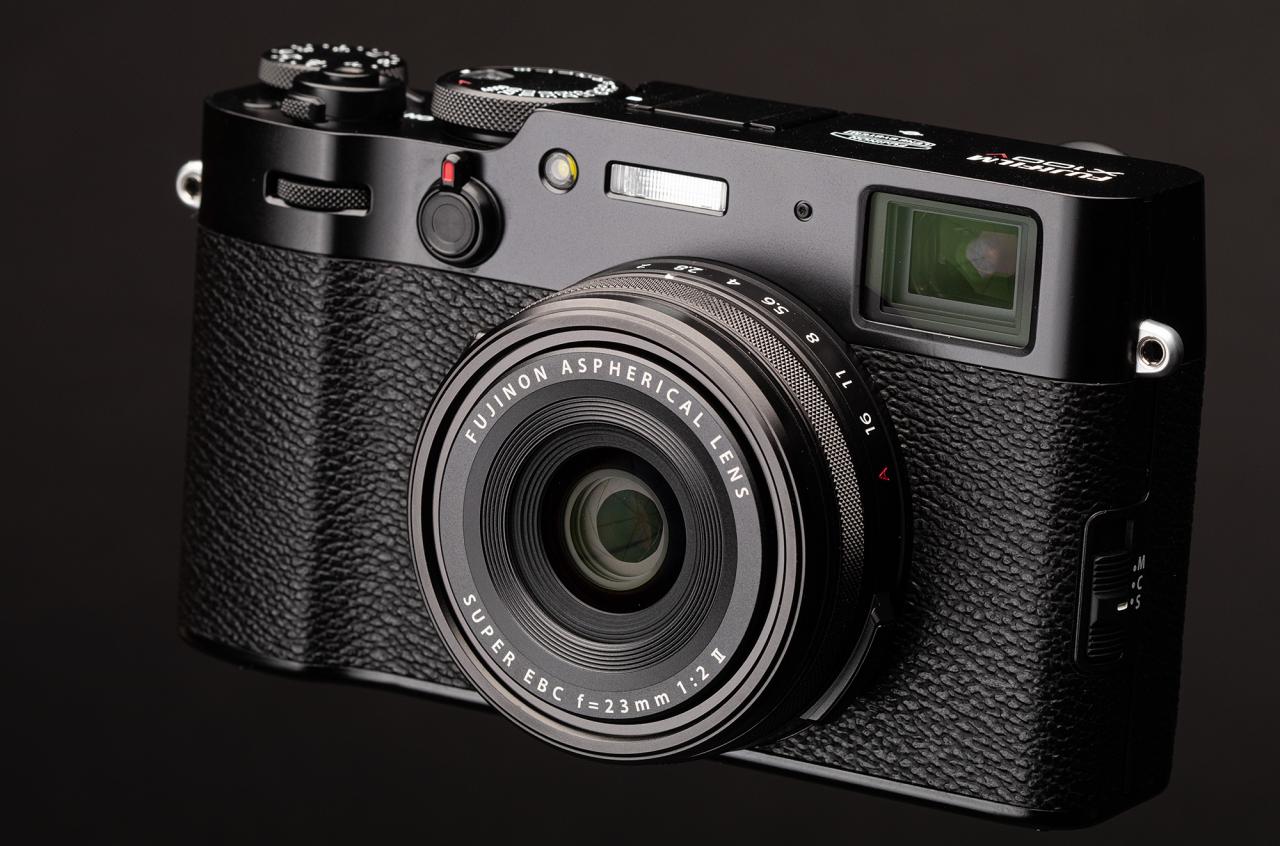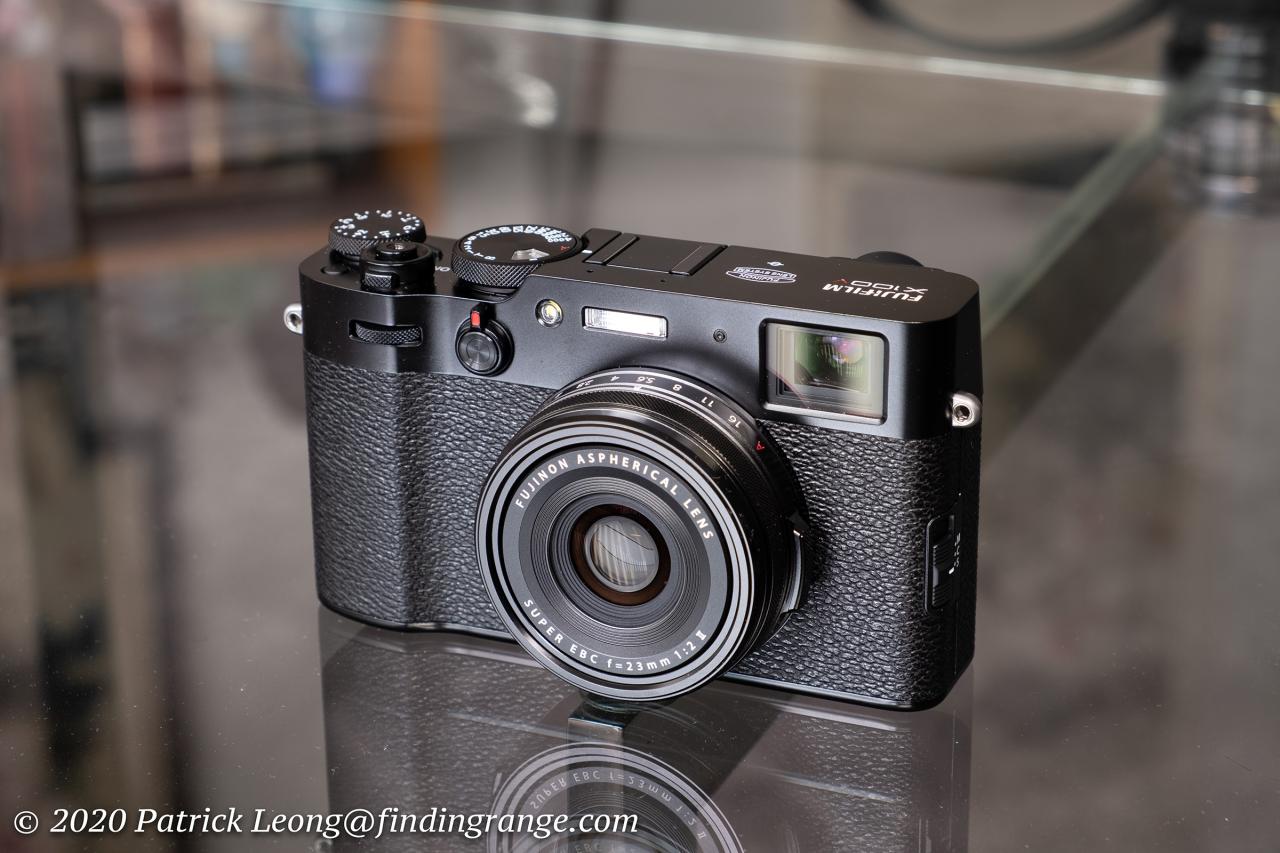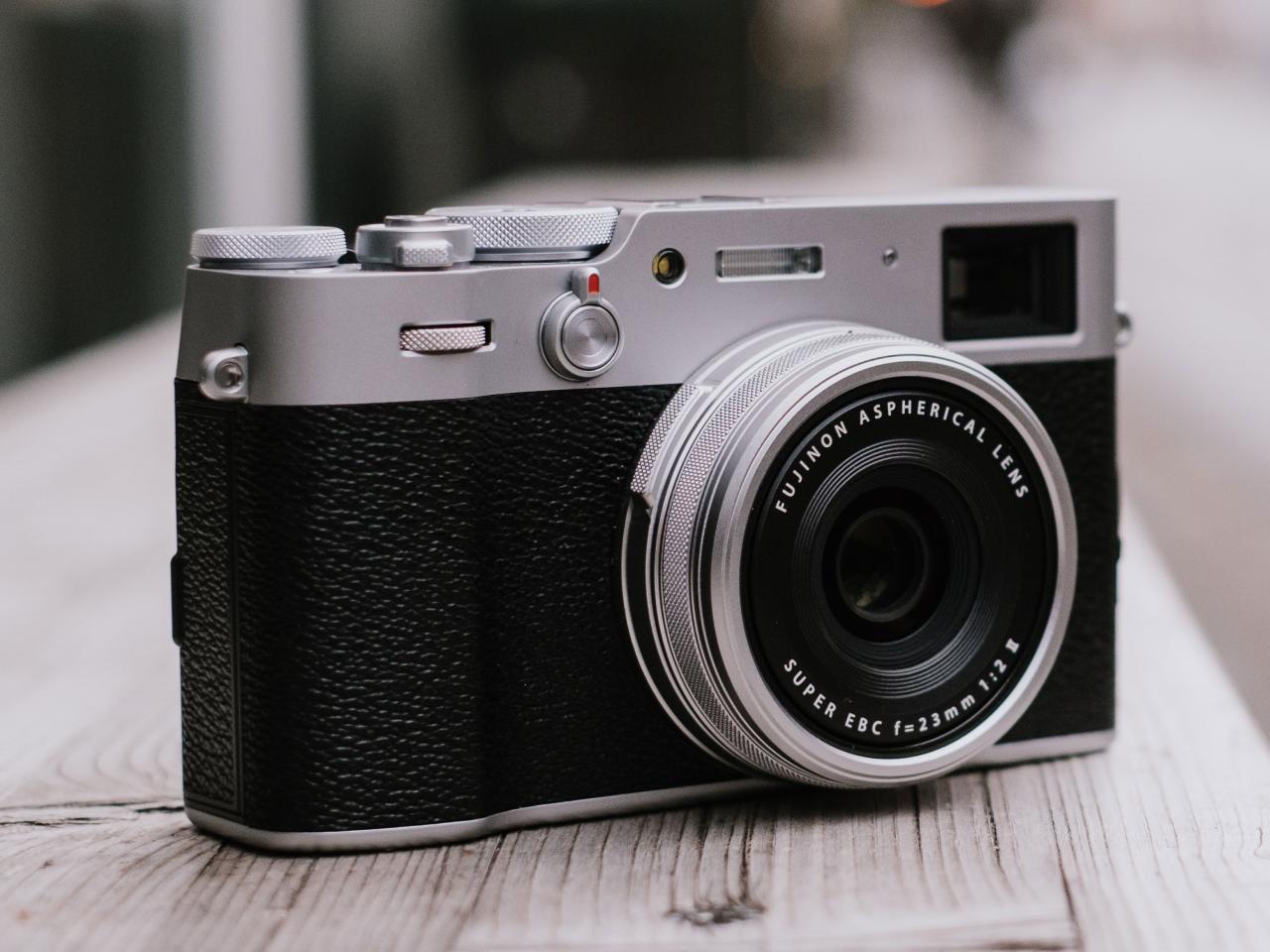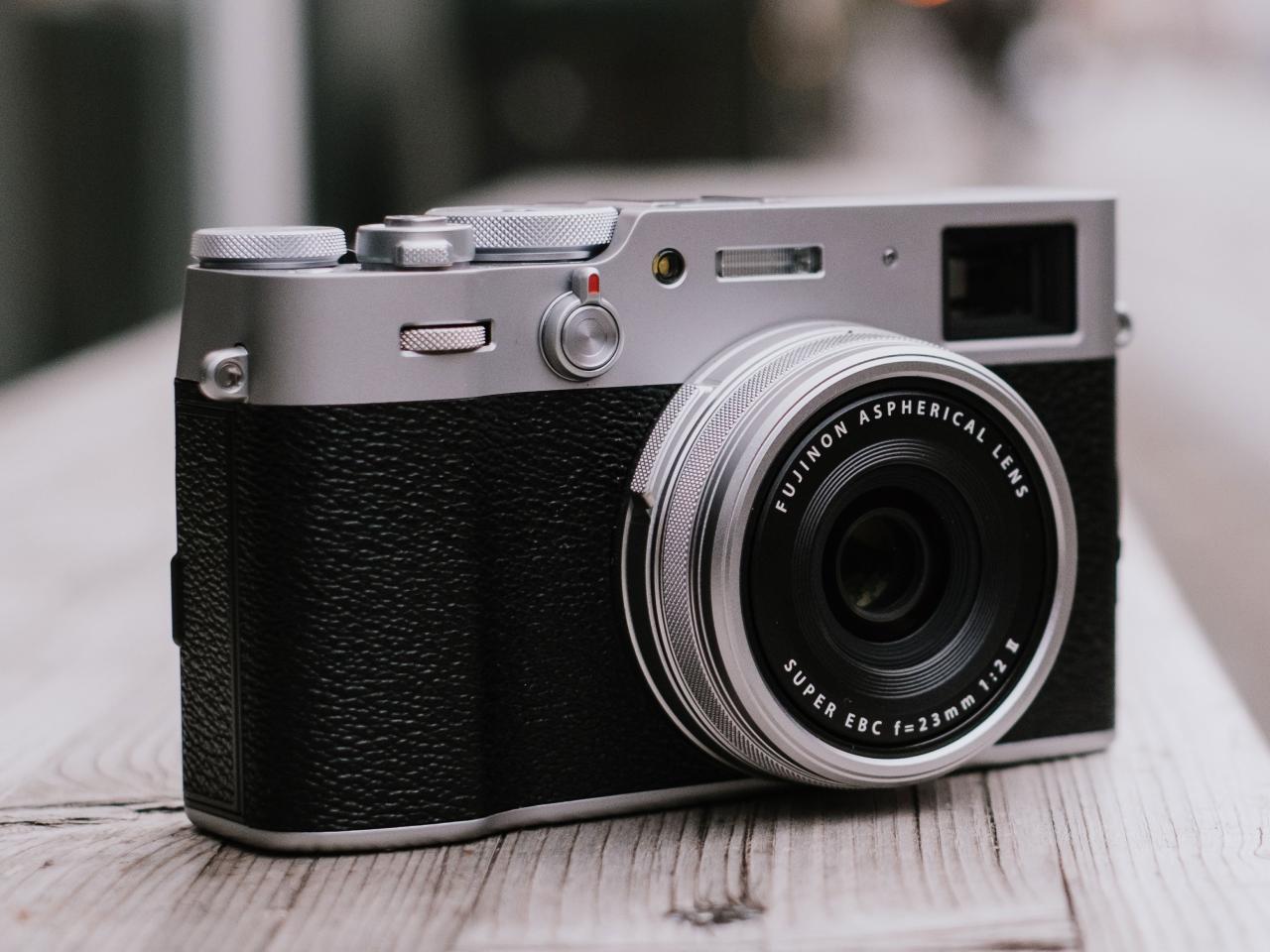Fujifilm X100V: The name conjures images of crisp detail, rich colors, and classic photographic style. This compact camera, renowned for its exceptional image quality and intuitive design, has captured the hearts of photographers worldwide. Its fixed lens, hybrid viewfinder, and unique film simulations offer a compelling blend of modern technology and vintage aesthetics, making it a versatile tool for a range of shooting styles, from street photography to landscapes and portraits.
We’ll delve into the specifics of its features, performance, and overall user experience to determine its place in the ever-evolving world of digital cameras.
This review will explore the X100V’s strengths and weaknesses, comparing it to competitors and providing practical advice for maximizing its potential. We will examine its image quality across various ISO settings and lighting conditions, analyze the performance of its autofocus system, and assess the user-friendliness of its interface and features. Ultimately, we aim to provide a comprehensive understanding of this celebrated camera and its suitability for different photographic needs.
Fujifilm X100V: A Deep Dive into the Iconic Compact Camera
The Fujifilm X100V has solidified its place as a coveted compact camera, appealing to both seasoned photographers and enthusiastic newcomers. Its blend of retro aesthetics, exceptional image quality, and user-friendly interface makes it a compelling choice in a crowded market. This detailed exploration will delve into the X100V’s key features, performance, and overall user experience, comparing it to competitors and showcasing its versatility through various photographic scenarios.
Fujifilm X100V Camera Overview
The X100V boasts a 26.1MP X-Trans CMOS 4 sensor, paired with a fixed 23mm f/2 lens (equivalent to 35mm on a full-frame camera). This combination delivers exceptional image quality, renowned for its dynamic range and accurate color reproduction. The camera’s design is a refined blend of classic aesthetics and modern functionality, featuring a robust magnesium alloy body and a tactile control layout.
Its hybrid viewfinder, combining an optical viewfinder (OVF) with an electronic viewfinder (EVF), offers a unique and flexible shooting experience.
The target audience for the X100V is broad, encompassing street photographers seeking a discreet yet powerful tool, travel photographers appreciating its compact size and image quality, and enthusiasts valuing its classic design and intuitive controls. Its versatility makes it suitable for a range of photographic genres, from landscapes to portraits.
| Model | Dimensions (mm) | Weight (g) | Sensor Size |
|---|---|---|---|
| X100 | 118 x 68 x 38 | 400 | APS-C |
| X100S | 118 x 68 x 38 | 400 | APS-C |
| X100T | 118 x 68 x 38 | 400 | APS-C |
| X100F | 117 x 68 x 33 | 473 | APS-C |
| X100V | 118 x 68 x 51 | 497 | APS-C |
Image Quality and Performance

The X100V’s image quality is consistently praised for its sharpness, detail, and accurate color reproduction, particularly in its renowned Film Simulations. Compared to other APS-C sensor cameras in its class, such as the Sony RX1R II or the Ricoh GR III, the X100V often holds its own, particularly in low-light conditions where its X-Trans sensor excels. The difference in image quality can be subtle depending on the specific conditions.
For instance, at high ISO settings (e.g., ISO 6400), the X100V may show slightly more noise compared to some full-frame cameras, but the noise is generally well-controlled and retains detail.
The autofocus system, while not the fastest on the market, is reliable and generally accurate for most shooting scenarios. It performs well in good lighting conditions but can struggle slightly in low light or with fast-moving subjects. The X100V’s film simulations—including Classic Chrome, Acros, and Velvia—offer a unique aesthetic appeal, allowing users to easily achieve a specific look and feel without extensive post-processing.
Lens and Functionality
The fixed 23mm f/2 lens is a key element of the X100V’s appeal. Its compact size and versatile focal length make it ideal for street photography, travel, and everyday snapshots. While the fixed lens limits flexibility, its design and performance are a strength.
- Strengths: Sharpness, excellent image quality, compact size, fast aperture for low-light shooting, pleasing bokeh.
- Weaknesses: Lack of zoom capability, limited versatility for different shooting situations requiring varying focal lengths.
The advantages of a fixed lens include its often superior optical quality, compactness, and generally faster autofocus. However, the lack of zoom functionality necessitates careful subject selection and positioning. The hybrid viewfinder combines the advantages of both OVF and EVF; the OVF offers a natural and lag-free viewing experience, while the EVF provides accurate exposure information and allows for shooting in various conditions.
User Experience and Features, Fujifilm x100v

Capturing street photography with the X100V involves a streamlined workflow. The compact size allows for discreet shooting, while the quick autofocus and intuitive controls enable rapid capture of fleeting moments. Utilizing the camera’s various shooting modes, such as aperture priority (A) or shutter priority (S), allows for precise control over exposure and depth of field. The camera’s manual focus mode also offers great control for photographers.
- Workflow: Turn on the camera, select desired shooting mode, compose shot using OVF or EVF, focus, and shoot.
- Tips and Techniques: Utilize the camera’s burst mode for capturing action sequences, use manual focus for precise control, experiment with different film simulations to achieve desired aesthetic.
Several accessories can enhance the X100V’s functionality, including:
- Additional batteries for extended shooting time
- A high-quality external flash for improved lighting control
- A carrying case or strap for convenient transport and protection
Comparison with Competitors

The X100V competes with several other compact cameras, each with its own strengths and weaknesses. A direct comparison highlights the X100V’s unique position in the market.
| Feature | X100V | Sony RX1R II | Ricoh GR III | Canon PowerShot G7 X Mark III |
|---|---|---|---|---|
| Sensor Size | APS-C | Full-frame | APS-C | 1-inch |
| Lens | Fixed 23mm f/2 | Fixed 35mm f/2 | Fixed 28mm f/2.8 | 24-100mm f/1.8-2.8 |
| Price (USD) | ~$1300 | ~$3200 | ~$800 | ~$700 |
| Viewfinder | Hybrid (OVF/EVF) | EVF | EVF | EVF |
The X100V’s strengths lie in its combination of image quality, classic design, and user experience. However, its fixed lens and higher price point compared to some competitors may be drawbacks for some users.
Sample Photography and Image Examples
The X100V’s versatility shines through in various photographic scenarios. Consider these examples:
Scenario 1: Street Photography – Using the camera’s fast autofocus and discreet size, capture candid shots of everyday life. Settings: Aperture Priority (A) mode, f/2.8, ISO 200, focus on the subject using the OVF for quick response. The image will feature shallow depth of field, isolating the subject from the busy background, emphasizing vibrant colors and natural light.
Scenario 2: Landscape Photography – Capture wide shots of scenic vistas. Settings: Aperture Priority (A) mode, f/8, ISO 100, use a tripod for sharp images. The image will be characterized by a large depth of field, sharp details across the scene, and accurate color reproduction. Lighting will be soft and even, possibly during the golden hour.
The Fujifilm X100V is renowned for its exceptional image quality and compact design, perfect for street photography. However, for capturing expansive aerial shots, a different approach is needed; consider the versatility offered by a drone with camera , which provides a unique perspective. Returning to the X100V, its strengths lie in its portability and immediate responsiveness, making it ideal for candid moments at ground level.
Scenario 3: Portraits – Create intimate portraits using the camera’s shallow depth of field capabilities. Settings: Aperture Priority (A) mode, f/2, ISO 200, use a fast shutter speed to freeze motion. The image will highlight the subject’s features, with a softly blurred background, emphasizing natural skin tones and capturing an emotional expression. Lighting will be soft and directional.
Scenario 4: Low-Light Photography – Capture images in dimly lit environments using the camera’s high ISO capabilities. Settings: Manual mode, f/2, ISO 3200, use a tripod to minimize camera shake. The image will show a good level of detail despite the low light, with some acceptable noise, showcasing the camera’s low-light performance. The lighting will be ambient, and the scene may be slightly grainy.
Scenario 5: Black and White Photography – Utilize the camera’s Acros film simulation for classic black and white images. Settings: Aperture Priority (A) mode, f/5.6, ISO 200, use Acros film simulation for a unique tonal range. The image will exhibit a rich tonal range, subtle contrast, and fine detail, providing a classic black and white aesthetic. Lighting will contribute to the image’s mood and contrast.
Advanced Features and Customization
The X100V offers several advanced features, including multiple exposure mode for creative layering of images, and video recording capabilities for capturing moving scenes. The camera’s extensive customization options allow users to tailor the controls and menu settings to their preferences. Button assignments can be changed, and various settings can be adjusted to optimize the user experience.
Importing and editing images from the X100V is straightforward. Images can be transferred to a computer via USB or wirelessly. Fujifilm’s X RAW Studio software provides robust editing capabilities for RAW files, while various other editing software options (Adobe Lightroom, Capture One, etc.) are compatible.
The Fujifilm X100V stands as a testament to the enduring appeal of compact cameras with exceptional image quality and a focus on user experience. Its blend of classic design elements with modern technology, combined with its intuitive operation and versatile feature set, makes it a compelling choice for both seasoned photographers and enthusiastic newcomers. While the fixed lens may limit some users, the benefits of its exceptional image quality and compact form factor outweigh the limitations for many.
Ultimately, the X100V offers a unique and rewarding photographic experience, inviting users to focus on the art of photography itself.
The Fujifilm X100V’s compact size makes it ideal for travel photography, capturing spontaneous moments wherever you go. Imagine using it to document a scenic drive, perhaps checking the conditions beforehand with the coquihalla weather camera to plan your route. Then, back to the X100V’s superb image quality and classic lens, you’ll be ready to capture stunning landscapes and memories effortlessly.
Key Questions Answered: Fujifilm X100v
What is the battery life like on the Fujifilm X100V?
Battery life is generally considered adequate for a day’s shooting, but varies depending on usage. Carrying a spare battery is recommended, especially for extended shoots.
Does the Fujifilm X100V shoot video?
Yes, it shoots 4K video at up to 30fps.
Is the Fujifilm X100V weather sealed?
No, the X100V is not weather-sealed. Use caution in wet or dusty conditions.
Can I use external microphones with the Fujifilm X100V?
Yes, it has a 3.5mm microphone input jack.
